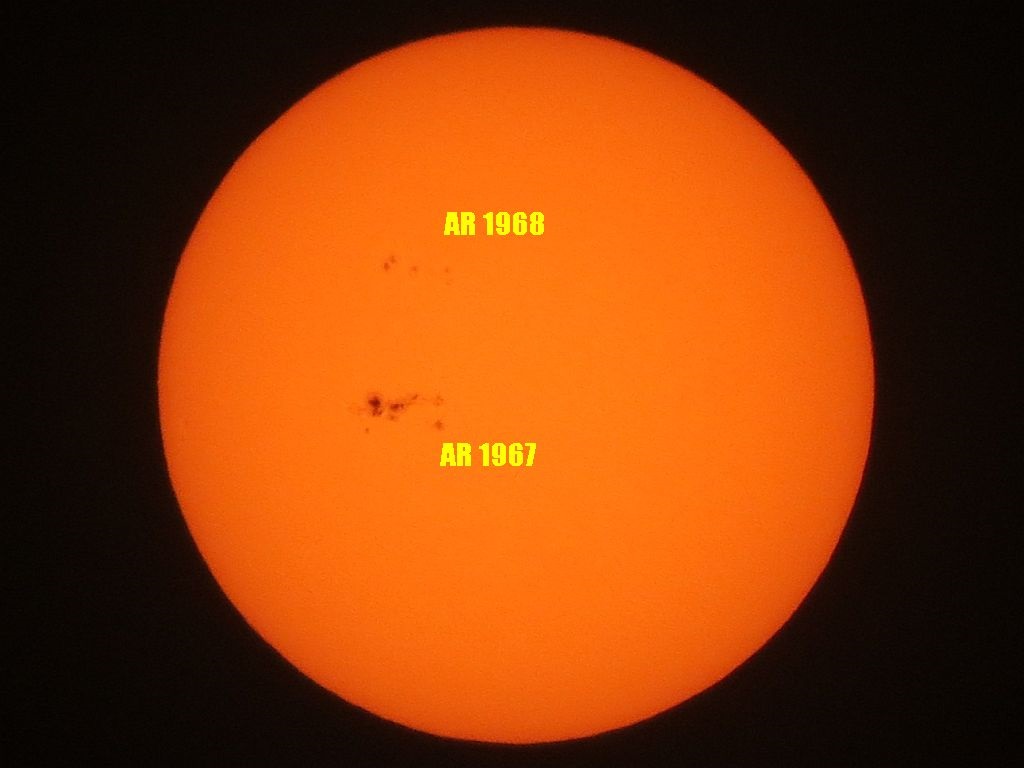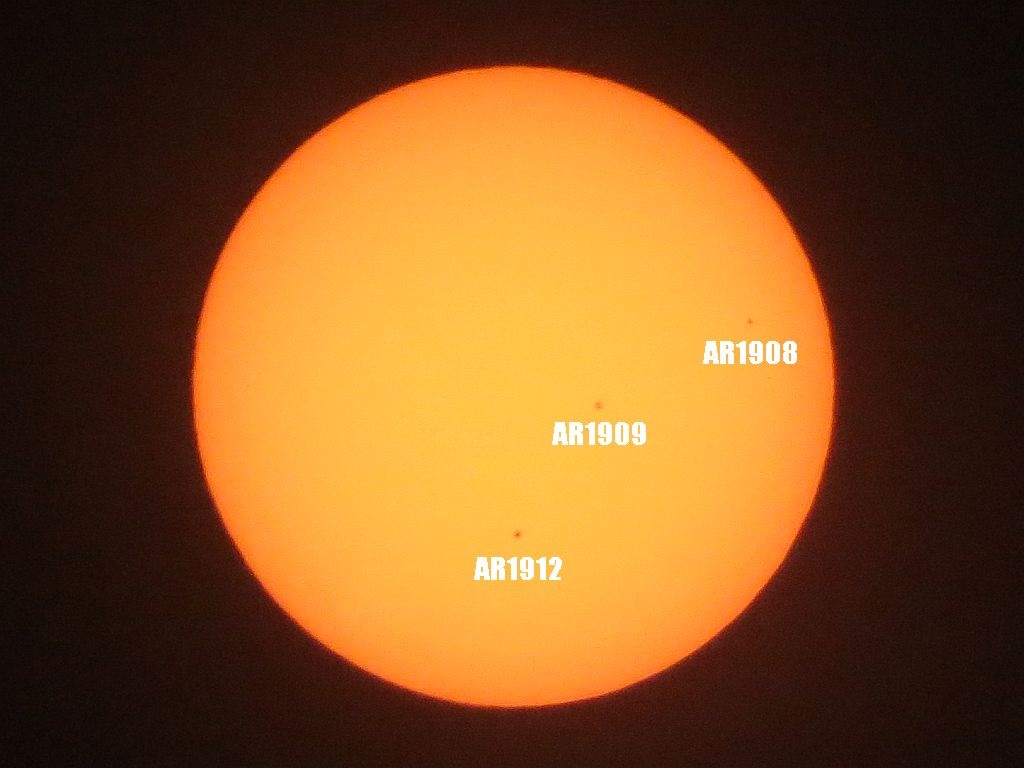There is a parade of sunspots crossing near the solar equator today. I went out this morning and captured the sunspots with my usual setup of the Canon SX-40 through the cheap little solar filter from Rainbow Symphony. Click on the image to enlarge.
AR 1974 is pointed directly at the Earth and could produce flares. AR 1975 and AR 1976 look to be more intense and will be pointed earthward in a day or so. This could mean auroras in the arctic, communications and electrical grid blackouts or enhanced radio communications as in Ham Radio. Or, it could mean nothing at all.
We have seen from the past that the presence of sunspots generally means warmer temperatures on earth while the absence of them for prolonged periods tend to bring cold periods called minima. Some examples are the Maunder Minimum, the Dalton Minimum and the 1900 Minimum. There was an unnamed minimum in the 1960’s that had Time and Newsweek predicting a new ice age. But, we know how the news media wants to bend things around to capitalize on sensationalism to sell copy, I guess. Or maybe to put forth a political agenda. I think we all know how the media operates these days.
Reference: Correlating Sunspots to Global Climate.






